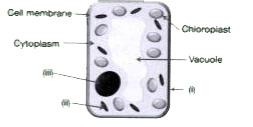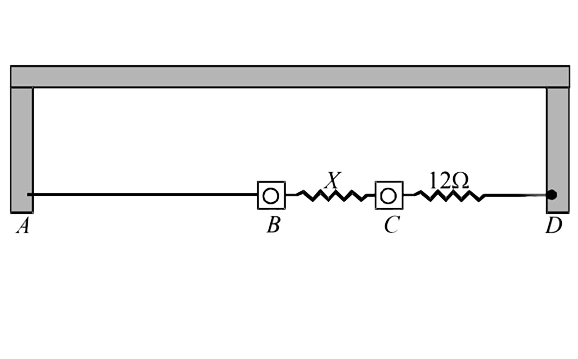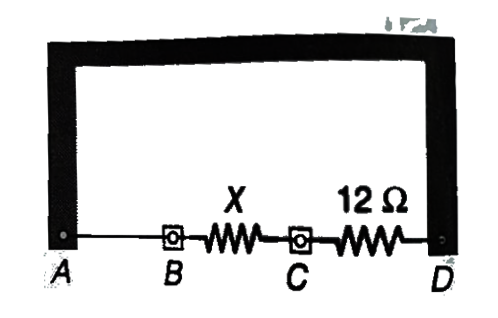Paheli and Boojho wonder whether the batteries used in tractors, trucks and inverters are also made from cells. Then why is it called a battery? Can you help them to find the answer to this question?
The battery used in tractors, trucks etc. is a combination of several cells. The cells are not dry cells. These are several sets of plates. Each set of plates acts like a cell.
Similar Questions
On a very cold morning, Boojho and Paheli were talking with each other as they walked down to their school. They observed that the air coming out of their mouth looked like smoke. They were amused and wondered how it happened. Help them find the answer.
View SolutionRechargable batteries include which of the those below?
(P) Dry cell
(Q) Lead-acid storage battery
(R ) Nickel -cadmium battery
View SolutionIn the circuit shown the ammeter 'A' reads 2A. XY is a circuit which can either be a resistance of a battery. In the direction of the current there will always be a potential drop across the resistance. Reagarding battery you have to remember that the potential difference across its terminals can be more than its emf or less depending upon whether the battery is delivering the current, or is being charged in the circuit

The potential difference as you move from Y to X while considering it to be a battery is :
View SolutionOn a Sunday morning Paheli’s friend visited her home. She wanted to see some flowering plants in the nearby garden. Both of them went to the garden. While returning from the garden they also observed some flowering plants on the road side. But to their surprise they found that the leaves and flowers of these roadside plants were comparatively very dull. Can you help them to know why ?
View SolutionThe plant cell has different organ which perform various functions. In addition to the cell membrane, plant cells also have another layer around them called the cell wall. This rigid layer is not present in animal cells. It is made up of a non-living material called cellulose. Check the below figure and try to answer the following questions

Plant cell is surrounded by outer layer called cell wall. Explain why cell wall is this important ?
View SolutionThe plant cell has different organ which perform various functions. In addition to the cell membrane, plant cells also have another layer around them called the cell wall. This rigid layer is not present in animal cells. It is made up of a non-living material called cellulose Check the below figure and try to answer the following questions

Cell wall in plant cell is made up of which component ?
View SolutionA thin uniform wire Ab of length 1m, an unknown resistance X and a resistance of 12Ω are connected by thick conducting strips, as shown in the figure. A battery and a galvanometer (with a sliding jockey connected to it) are also available. Connections are to be made to measure the unknown resistance X using the principle of Wheatstone bridge. Answer the following questions.

(a) Are there positive and negative terminals on the galvanometer?
(b) Copy the figure in your answer book and show the battery and the galvanometer (with jockey) connected at appropriate points.
View SolutionA thin uniform wire AB of length 1m, an unknown resistance X and a resistance of 12Ω are connected by thick conducting strips, as shown in the figure. A battery and a galvanometer (with a sliding jockey connected to it) are also available. Connections are to be made to measure the unknown resistance X. Using the principle of Wheatstone bridge answer the following questions :
(a) Are there positive and negative terminals on the galvanometer?
(b) Copy the figure in your answer book and show the battery and the galvanometer (with jockey connect at appropriate points.
(c) After appropriate connections are made, it is found that no deflection takes place in th, from galvanometer when the sliding jockey touches the wire at a distance of 60cm from A. Obtain value of the resistance X.

View SolutionA thin uniform wire AB of length 1m, an unknown resistance X and a resistance of 12Ω are connected by thick conducting strips, as shown in the figure. A battery and a galvanometer (with a sliding jockey connected to it) are also available. Connections are to be made to measure the unknown resistance X. Using the principle of Wheatstone bridge answer the following questions :
(a) Are there positive and negative terminals on the galvanometer?
(b) Copy the figure in your answer book and show the battery and the galvanometer (with jockey connect at appropriate points.
(c) After appropriate connections are made, it is found that no deflection takes place in th, from galvanometer when the sliding jockey touches the wire at a distance of 60cm from A. Obtain value of the resistance X.

View SolutionA thin uniform wire AB of length 1m, an unknown resistance X and a resistance of 12Ω are connected by thick conducting strips, as shown in the figure. A battery and a galvanometer (with a sliding jockey connected to it) are also available. Connections are to be made to measure the unknown resistance X. Using the principle of Wheatstone bridge answer the following questions :
(a) Are there positive and negative terminals on the galvanometer?
(b) Copy the figure in your answer book and show the battery and the galvanometer (with jockey connect at appropriate points.
(c) After appropriate connections are made, it is found that no deflection takes place in th, from galvanometer when the sliding jockey touches the wire at a distance of 60cm from A. Obtain value of the resistance X.

View Solution
